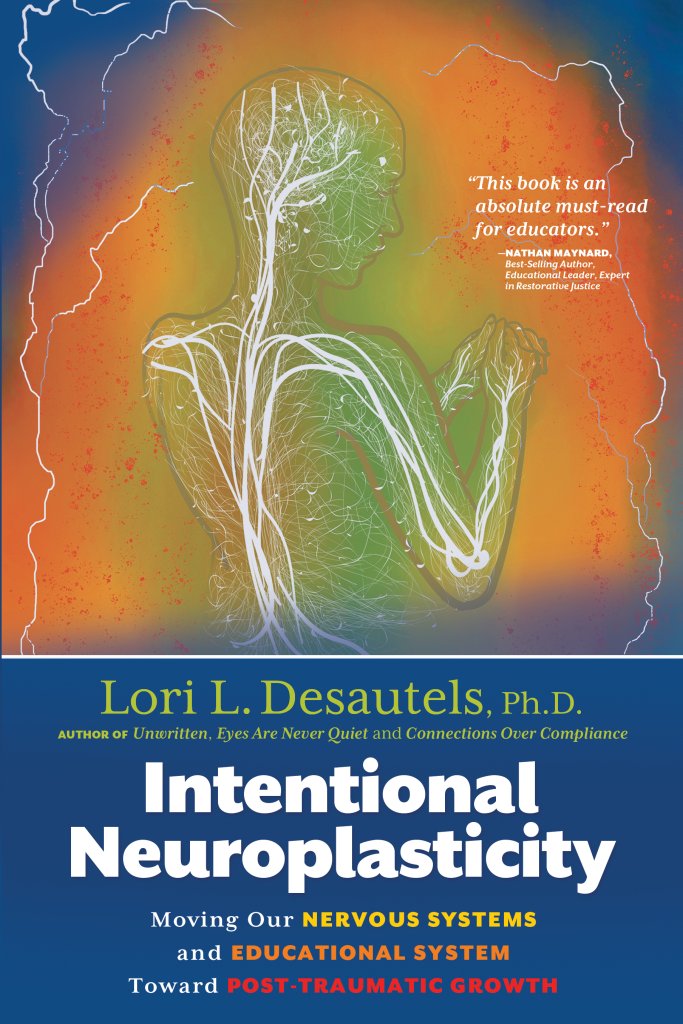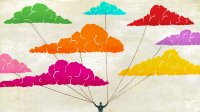The Power of Reframing to ‘Rewire’ Students’ Brains
Teachers can use the principles of neuroplasticity to help students be aware of thought patterns that are no longer serving them and begin to take risks in the classroom.
Your content has been saved!
Go to My Saved Content.Neuroplasticity is our human superpower. As stated in the Introduction, there is growing research on plasticity, but one of the key principles of neuroplasticity shared by Dr. Bruce Perry is termed specificity. Dr. Perry states, “In order to change any part of the brain, that specific part of the brain must be activated.” One of the remarkable properties of the brain and nervous system is its capacity to change and adapt to our individual worlds. Brain cells and brain networks work together in use-dependent ways, and with awareness, intention, and practice, we can strengthen those connections between neurons, leading to improved performance and well-being. Neuroplasticity is how our nervous systems produce and create feelings, thoughts, and behaviors through a process of structural and therefore functional change. How? Every time we think a thought and generate a feeling, we install neurological hardware that impacts our well-being in all moments.
Our neural roadways or networks fire, and those connections between neurons signal the emotional limbic brain, which signals hormones, which enter the receptor sites on cells. In turn, those messages or emotional signals are signals to the genes that create new proteins; and proteins are the expressions of life, contributing to our well-being. Author and speaker Joe Dispenza, D.C., states that with a clear intention and elevated emotion, we don’t need to wait for a changing condition to bring us peace or hopefulness; we can begin to find moments or “glimmers” of conditions, such as pieces of experiences or thoughts that feel safe and hopeful, which can begin a new stream of improved thoughts, feelings, and behaviors. Cultivating an elevated emotion and a clear intention often requires one another’s support, and this is why co-regulation is so important as we move through the emotional and cognitive changes in our lives.
This takes repetition and is a process! These small moments that we notice each day can accumulate to become thought routines that begin to reframe a difficult day or challenging experiences.
The concept that the brain is “self-changing,” meaning that it organizes, disorganizes, and reorganizes based upon experiences, prompts the revelation that the architecture of each brain is unique. Adolescent brain psychiatrist and author Dr. Dan Siegel asserts that, because humans have the power to direct their own attention (focal attention), they thus have the power to shape and reshape the firing patterns and architecture of the brain, impacting the developmental processes of parenting, education, and psychotherapy. Just as we are able to focus upon different muscle groups through physical exercise, we are also capable of stimulating the firing patterns of targeted neuron connections in certain areas of the brain by intentionally focusing so that we can strengthen and integrate those neural circuits.
Defining plasticity is tricky, with both positive and negative implications in how our attention and experiences create neural networks. Author Martha Straus writes, “If an individual has no options for corrective experiences, his brain will continue to stimulate and develop neural networks that perpetuate old patterns. The brain exposed to psychological trauma, for example, responds to internal and external cues by structuring itself around those firings. However, if a trauma survivor develops the capacity to focus attention on the formation of new neural networks, theoretically, his brain can then restructure to experience that same trauma very differently.”
The Power of Awareness and Reframing
How can we consistently support ourselves—as well as our students—during these times of unpredictability and heightened emotional states? We can begin by becoming aware of and paying attention to our feelings and sensations. We can validate where we are in this moment by modeling this awareness for our children and youth. Following awareness and felt validation, we can choose an improved perspective or thought. We might begin reframing a thought or perspective, accompanied by a short regulatory practice, as that small action step begins to weaken the brain architecture of synapses, those specific connections between neurons that no longer serve us. Not only can we strengthen circuits between brain areas by getting these areas to fire at the same time and produce new feelings, thoughts, and behaviors, but we can also weaken connections because, as we shared previously, neurons that fire apart wire apart! Can we begin to weaken links of pain-based thoughts and feelings by replacing these habits of thoughts, feelings, and behaviors with practices that generate social and emotional well-being?
These reframing practices will require honest feedback and support from one another. We will need to be intentional and patient. Through careful, mindful effort, we can leave behind judgment or guilt, because awareness and recognition of our autonomic states begin to move our brains and bodies into conditions that feel hopeful and collaborative. Relational neuroscience increasingly assures us that we are continually shaping one another’s embodied brains, and that the safety provided by deep listening to one another offers tremendous support.

Education requires that we’re able to regulate our own state. We serve our students better when we prepare our nervous systems for the mental and cognitive tasks needed for learning and academic growth, as well as social and emotional development at any age. Dr. Arielle Schwartz writes, “The human body is also equipped with an innate physiological resilience system, which is our autonomic nervous system.” There is more wisdom in your body than in your deepest philosophy. When we learn to partner with our autonomic nervous system, we can begin to reshape this system through listening to our sensations, the language of our bodies, with much appreciation.
Our nervous system drives all that we sense, feel, think, and are! It holds our past, and when experiences of trauma occur in our lives, our nervous system reorganizes and prioritizes protection. This automatic survival reaction is built into our biology and, when activated for long periods of time to produce an overactivation of stress hormones, this can create a chronic disruption of regulation in our brains and bodies. As mentioned earlier, this is neuroplasticity by default.
We are creatures of habit. Our thoughts produce biochemical reactions in the brain, sending signals to the body, and our bodies begin to feel in similar ways to how we were thinking. We can unconsciously think thoughts that produce feelings, and we can feel our way into similar thoughts that create a continuous cycle of habits of thoughts and feelings. Without intention, our feelings, thoughts, and routines automatically recycle, producing the same behaviors and choices.
Therefore, my brain activity and biology stay the same. As I stated in the Introduction, this work begins with me. When I am thinking the same thoughts, generating the same feelings, performing the same routines and actions, and swimming in the same emotions, my nervous system chemistry stays stagnant and, in some ways, I am living in the past. That state of sameness can feel comfortable and effortless, a state of knowing who you are, but it also can feel miserable and helpless. Dispenza states, “Your personality is made up of how you think, act, and how you feel. It is your present reality.” But if we want to change how we think, feel, and experience our lives, we must be willing to explore, question, and wonder what is serving us well in this time, and what is still serving our survival responses that we no longer need. Understanding how our nervous systems function in response to our environments and experiences is critical for children, youth, and adults to explore.
Our brains contain about 86 to 100 billion neurons. The synapses connecting those neurons are where our cells exchange information. If learning makes new connections, then remembering that learning will strengthen those connections. As our brains create these structural changes, our thoughts produce neurotransmitters, a mixture of neurochemicals that create emotions. Dopamine and serotonin are two examples of neurotransmitters that may be familiar. When we think about something pleasurable, anticipate a vacation or a weekend gathering, or visualize a calming place with the sights, sounds, tastes, and people we love, we can stimulate the production of these neurotransmitters. Our thoughts produce how we feel, and those feelings produce related thoughts, and as this occurs, our neurons keep firing along the same pathways, strengthening the relationship between the cells so that their signal becomes stronger with repeated activation. If we repeat enough times what we have learned, we literally reinforce communities of neurons that begin to remember well the thoughts, feelings, or behaviors that we have consciously or subconsciously practiced and rehearsed. Neuroscientist Dr. Lara Boyd refers to these brain changes when she defines neuroplasticity as the chemical, structural, and functional changes that occur with learning. When we are thinking the same thoughts and producing the same feelings, our brains are firing and activating the same neural circuits in the same patterns and sequences. This is what Dispenza refers to as neuro-rigidity. He defines this concept as thinking inside the box, which means unintentionally creating a finite signature of automatic programs.
Many of us have spent weeks, months, or longer trying to change habits of thoughts, feelings, or behaviors that we found next to impossible to change. The New Year brings promises and resolutions, yet by February, many of us are back to our patterned ways of being, behaving, and feeling. This is not because we lack will power, but because our nervous systems need patterned repetitive experiences over time. When we begin to think differently, feel differently, and choose novel behaviors, our brains and nervous systems may feel threatened and move to survival states. Therefore, we often relinquish new habits that feel uncomfortable and unfamiliar. Once we understand that the biological and chemical changes in our nervous system are causing this discomfort, we feel more powerful and confident as we move through these rivers of change. Most of us have been so conditioned to run from the unknown that we do not really question this fear. Dispenza states, “If you told me that you did not like being in that void of the unknown because it feels disorienting and you can’t see what lies ahead, I’d say that’s actually great, because the best way to predict your future is to create your future.”
To think outside the box generates neuroplasticity. When our brains change, our minds change, because our mind is the brain in action. As we use our brains, they grow and change through the use-dependent principle of neuroplasticity. Our brains prune away connections or synapses that we no longer use or need, while sprouting connections when we learn something new. Our brains are organized to reflect everything we know, and we use this historical information to predict new experiences. Therefore, change can feel very difficult as we keep records of the trillions and trillions of neurons that have connected with one another throughout our lives. The complex networks of neurons that have fired throughout our days on earth have formed memories of our past experiences, and if we do not create intentional changes or shifts, we become individuals and communities who are living in the past.
©2023 Lori L. Desautels, Ph.D. (revelationsineducation.com). All rights reserved. Used with permission from Wyatt-MacKenzie Publishing.
